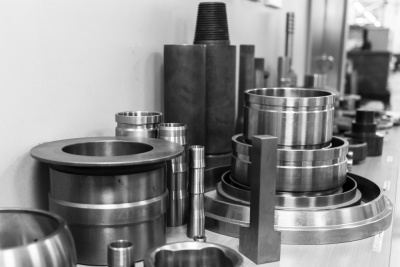
Nanodiamond material specialist Carbodeon of Finland has worked with metal finishing specialist CCT Plating of Germany to develop a new NanoDiamond enhanced electroless nickel plating with significantly improved performance in sliding applications. Electroless nickel coatings offer many advantages over other coating types, such as excellent corrosion and abrasion resistance, creating an even coating thickness over complex geometries and at relatively low cost, according to the company. A limitation to their performance has been that they don’t perform well in tribological applications involving moving metal parts, where adhesive wear and galling tend to lead to rapid wear or failure.
Incorporating Carbodeon NanoDiamond into the coating solves this problem. Spherical diamond nanoparticles are specially treated to make them disperse in coating liquids and carry a positive electrical charge on their surfaces. In the plating process, the diamond particles behave similarly to positively charged metal ions and together with the coating material they co-deposit onto the component.
Metal-diamond composite surface treatments have already shown their value in abrasion-resistant coatings, but in this latest generation of coatings the process has been optimized to better combat adhesive wear, which occurs mainly when the plated parts are in sliding contact with other metal parts.
Key performance characteristics are:
- The coating significantly reduces adhesive wear, but does not make the coating abrasive or increase the surface friction.
- The coatings can be used “as plated” which does not affect the substrate’s heat treatment condition, or can be subjected to annealing for maximum performance.
- Wear rate is reduced by 30 percent “as plated” and by up to 85 percent in the annealed state.
- The annealed version has 2 to 3 times the durability of standard annealed coatings.
- The coating hardness is significantly increased especially when annealed – reaching a maximum Vickers hardness values of 1030 Hv.
- The process contains no hexavalent chromium and so is environmentally friendly and free of complex regulations.
- Low diamond content makes these coatings affordable.
Target applications include anything which experiences sliding wear, including the automotive, printing, textile manufacturing and oil and gas industries.
The nanomaterial for the process can be obtained from Carbodeon who can also implement the complete plating process in existing customer plating facilities. Alternatively, job plating or turnkey solutions can be carried out by CCT Plating in Stuttgart, Germany.
Carbodeon has patented the nanodiamond material and the plating application.
Contact Details
Related Glossary Terms
- Vickers hardness number ( HV)
Vickers hardness number ( HV)
Number related to the applied load and surface area of the permanent impression made by a square-based pyramidal diamond indenter having included face angles of 136º. The Vickers hardness number is a ratio of the applied load in kgf, multiplied by 1.8544, and divided by the length of diagonal squared.
- abrasive
abrasive
Substance used for grinding, honing, lapping, superfinishing and polishing. Examples include garnet, emery, corundum, silicon carbide, cubic boron nitride and diamond in various grit sizes.
- annealing
annealing
Softening a metal by heating it to and holding it at a controlled temperature, then cooling it at a controlled rate. Also performed to produce simultaneously desired changes in other properties or in the microstructure. The purposes of such changes include improvement of machinability, facilitation of cold work, improvement of mechanical or electrical properties and increase in stability of dimensions. Types of annealing include blue, black, box, bright, full, intermediate, isothermal, quench and recrystallization.
- galling
galling
Condition whereby excessive friction between high spots results in localized welding with subsequent spalling and further roughening of the rubbing surface(s) of one or both of two mating parts.
- hardness
hardness
Hardness is a measure of the resistance of a material to surface indentation or abrasion. There is no absolute scale for hardness. In order to express hardness quantitatively, each type of test has its own scale, which defines hardness. Indentation hardness obtained through static methods is measured by Brinell, Rockwell, Vickers and Knoop tests. Hardness without indentation is measured by a dynamic method, known as the Scleroscope test.







